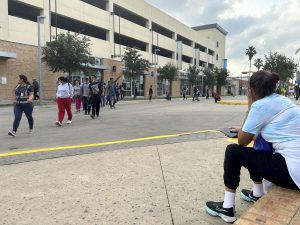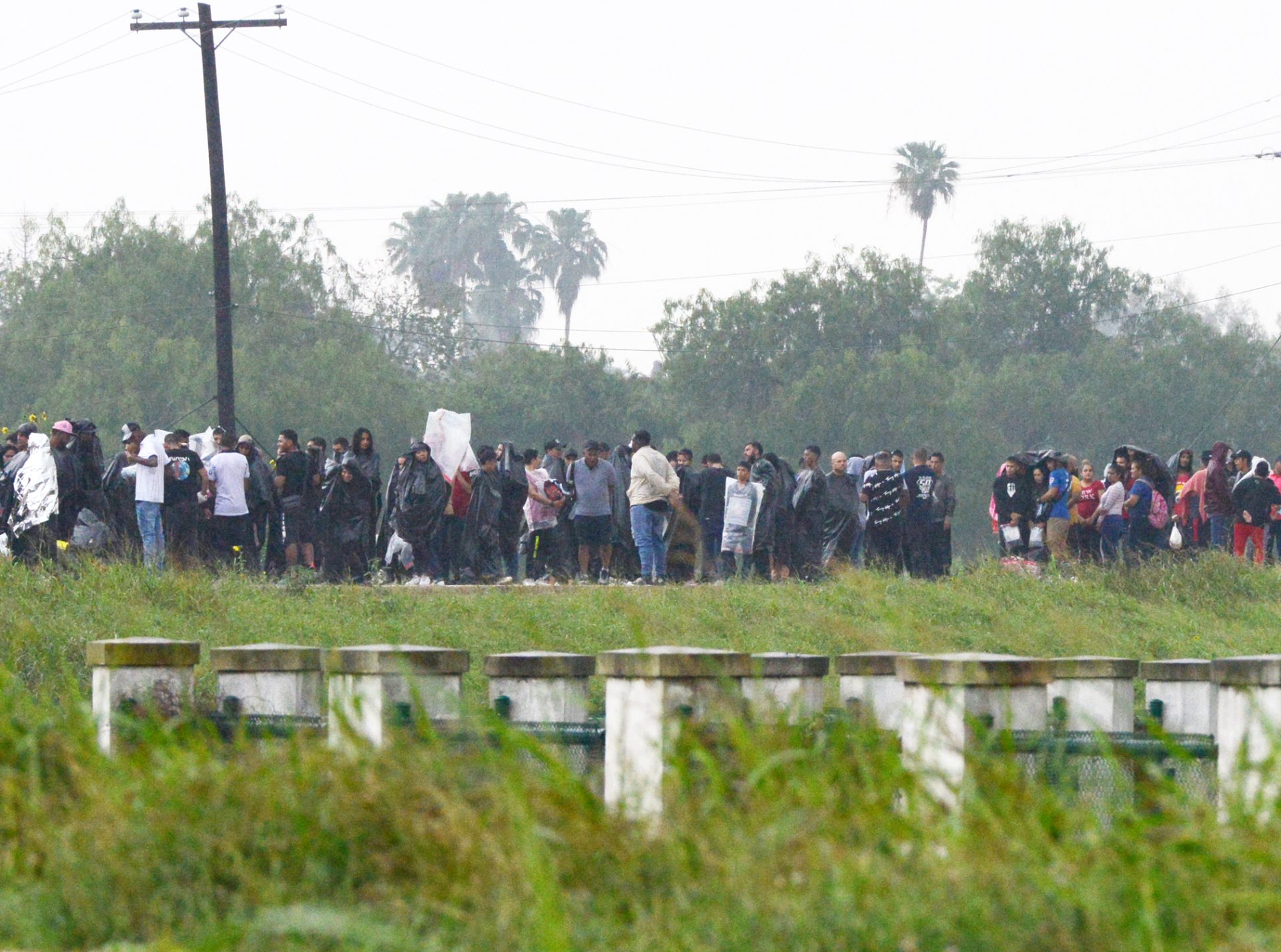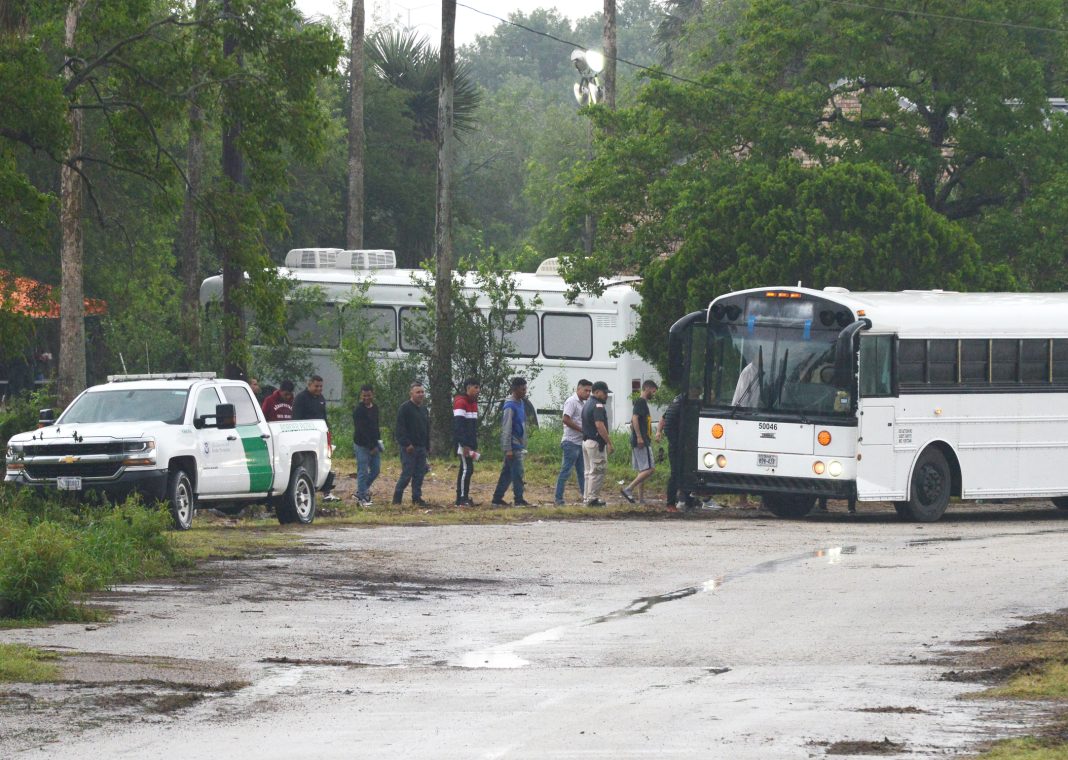|
Only have a minute? Listen instead
Getting your Trinity Audio player ready...
|
On the eve of the expiration of Title 42, Brownsville Mayor Trey Mendez said the city should be able to handle whatever comes as long as the lines of communication with the federal government remain open.

The number of migrants and/or asylum seekers arriving at the Brownsville port-of-entry and elsewhere along the U.S.-Mexico border has swelled profoundly in recent weeks as May 11, the sunset date for Title 42, has approached.
Dating back to 1944 and rarely used until the Trump administration implemented it in March 2020 during the COVID-19 pandemic, Title 42 gives the government the power to quickly expel migrants in the name of public health and social welfare.
“I do feel that the city itself is in a really good position,” Mendez said. “We’ve been doing this for three years. We’ve been able to create a process that’s very efficient that gets people to their final destination. We know that the final destination is not Brownsville, so we’ve … seen it as kind of our role to get people to their destination quickly, and we’ve done a good job of that even as the numbers increased.”
It has allowed Brownsville to avoid some of the issues other border cities are grappling with, he said.
“That’s always been the goal, is to keep the public safe and ensure that there’s not any issues and that we don’t have individuals on the streets,” Mendez said.
The former Fort Brown Golf Course has been a main point for migrants crossing illegally, and Customs and Border Protection has established a temporary staging facility there for the rapid processing of migrants before they’re bused out of the area, said the Border Patrol’s Rio Grande Valley Sector Chief Patrol Agent Gloria Chavez on April 28.
“That is the new way of us officially getting people out of a certain region,” she said. “For us, it’s very important that they don’t congregate at that location and that we’re able to get them closer to central processing centers and/or … other locations outside the RGV.”
Homeland Security Secretary Alejandro Mayorkas, at a Wednesday morning press conference, said the Biden administration has been preparing since 2021 for the end of Title 42, though it will “take time for the results to be fully realized.”
Part of that effort has involved hiring more Border Patrol agents for the first time in more than a decade and setting up regional processing centers in central and South American countries where the vast majority of migrants are coming from, which is aimed in part at stemming the flow of migrants to the U.S. border, he said.

The regional processing centers are an example of new legal migration pathways the Biden administration is creating in response to humanitarian and security imperatives, which provide a “safe and orderly way into the United States if they qualify” while cutting out the unscrupulous smugglers who prey on migrants, Mayorkas said.
Smugglers have been spreading misinformation that the U.S. border will be open after May 11, he said, and that his department has launched a new digital advertising campaign in central and South America to counter that misinformation.
“The smugglers care only about profit, not people,” Mayorkas said. “They do not care about you or your well being. Do not believe their lies. Do not risk your life and your life savings only to be removed from the United States if and when you arrive here. … We are making it clear that our border is not open.”
He blamed the border situation on more than two decades of congressional inaction on immigration reform, plus the refusal of Congress to give DHS the resources it needs to adequately address the problem. Homeland Security last week announced an additional $332 million to help communities along the U.S. southern border to deal with the migrant surge, Mayorkas said.

Mendez confirmed Brownsville was allocated almost $6 million to help process migrants coming into the city, adding that Mayorkas has been responsive and “a good partner to the city of Brownsville.”
“I’ve met with him a few times, and he’s always been willing to listen and help in all ways. And you’ve seen some funding flow down to Brownsville, which is great, and we’re going to continue to have hopefully good communication with the secretary moving forward,” he said.
“The only way I see any sort of breakdown in the process is if we don’t continue to have the coordination and communication that we have had with our federal partners or if we get an extreme amount of people that we’re not expecting,” Mendez said. “At this point we have a pretty good idea what to expect, so I don’t expect any of our system to be overwhelmed.”
He noted that the return to normal Title 8 migrant processing after Title 42 sunsets actually means a higher bar for those seeking asylum in the United States, while setting harsher penalties for those who attempt to enter illegally.
“If individuals are crossing illegally, now they will not only be sent back, but they will also not be able to (apply) for five years, which I think is also going to be effective. But we won’t see any of that implemented for at least the next couple of days and throughout the course of the next few weeks,” Mendez said.




